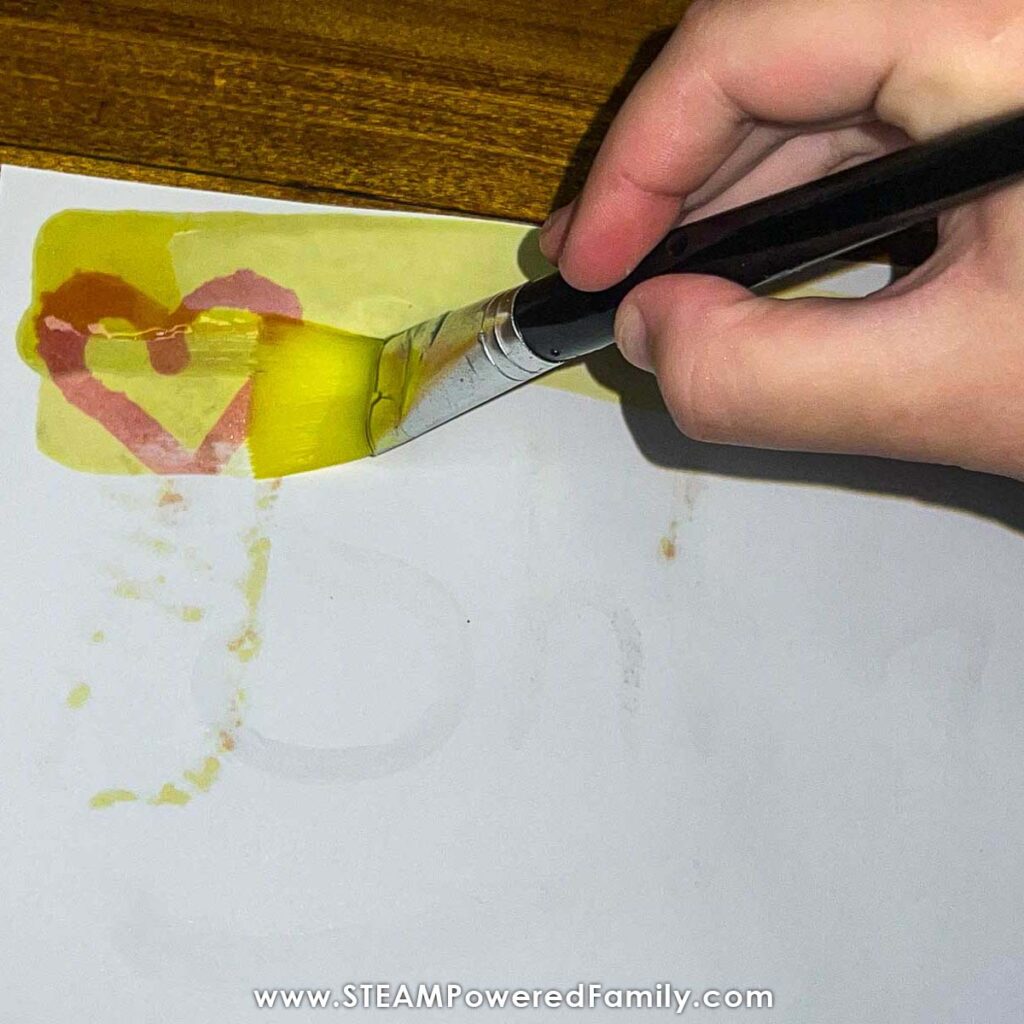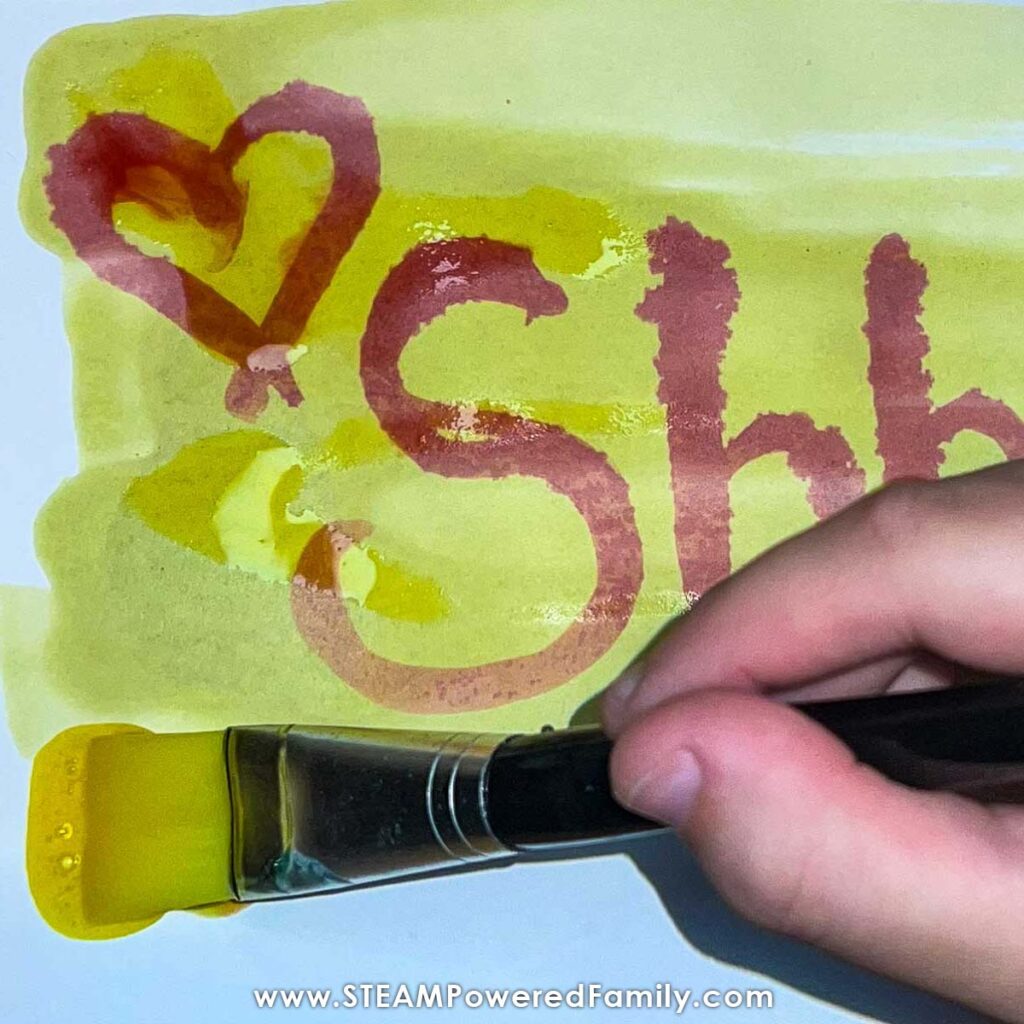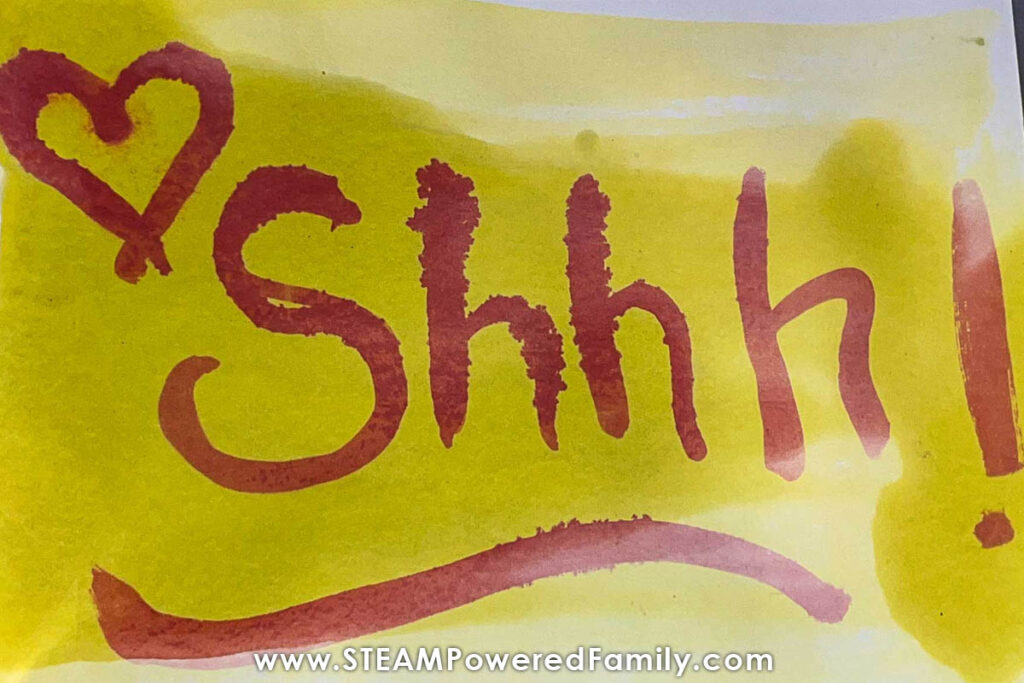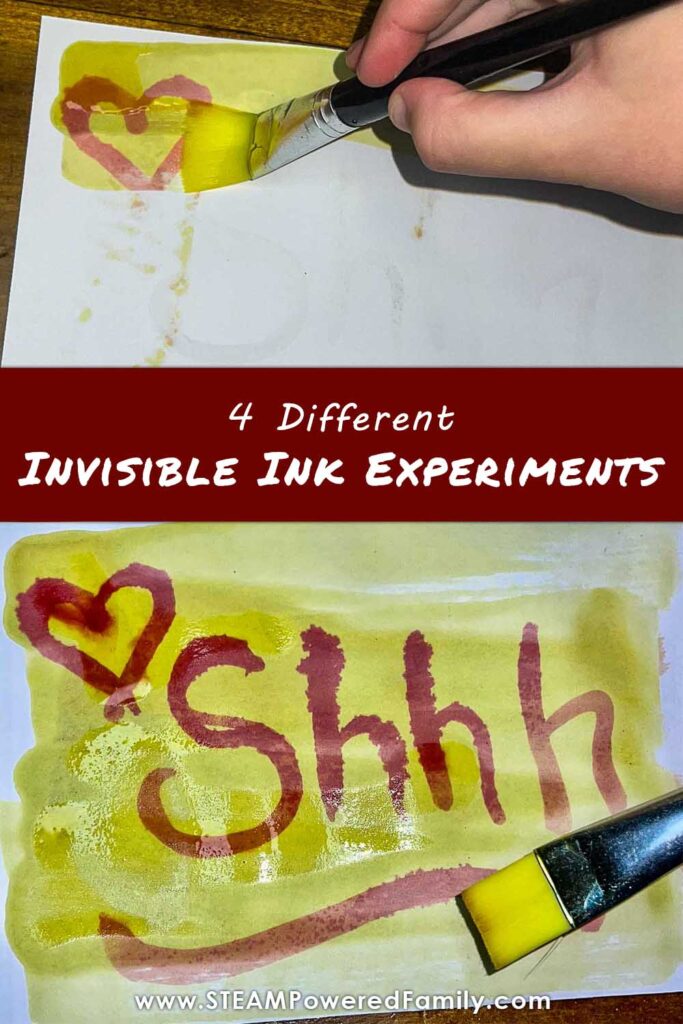Invisible Ink Project – No Fire Required!
Kids love a big surprise moment, and science is a great way to have those big wow moments with your kids. In this simple science experiment, we are making invisible ink. Invisible ink has been used for hundreds of years, making this a fantastic science project with a social studies or history link for your cross subject studies.
DIY Invisible Ink – Sending a Secret Message!
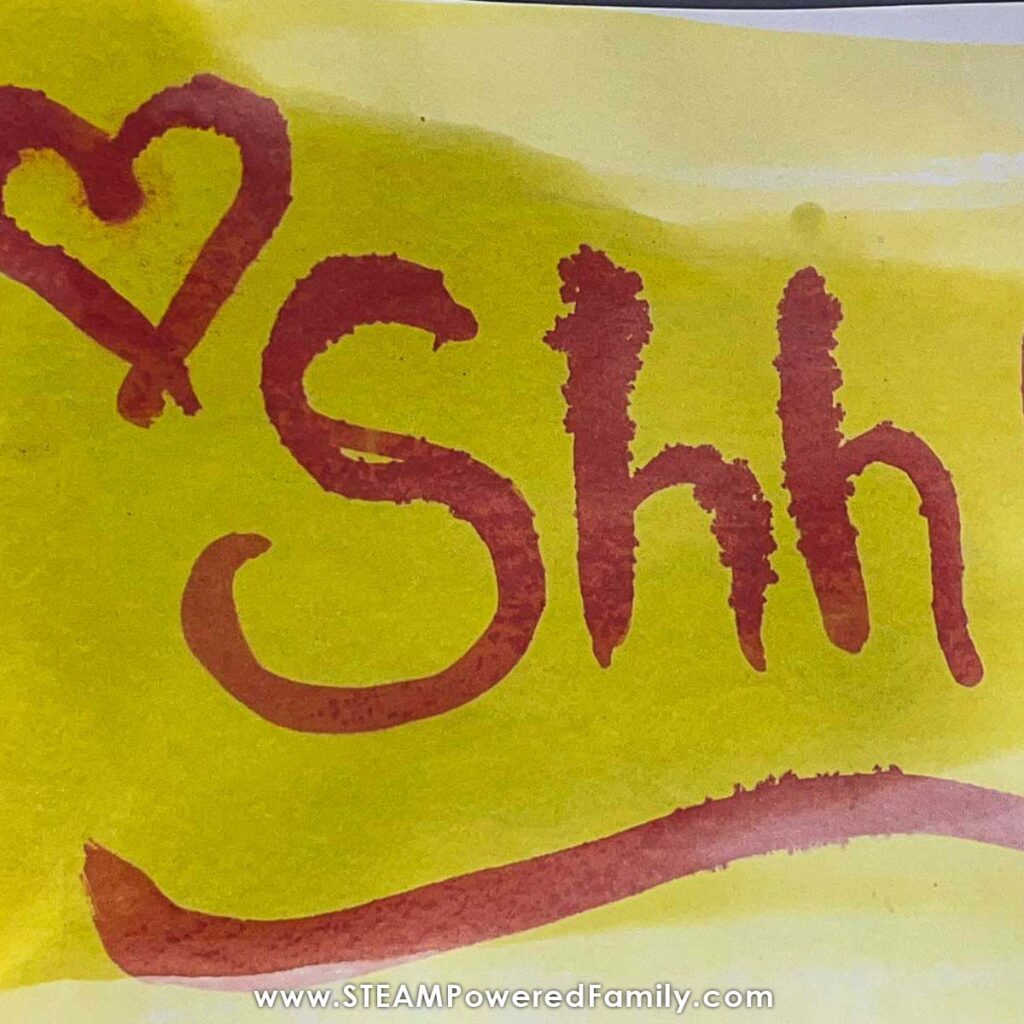
Disclaimer: This article may contain commission or affiliate links. As an Amazon Influencer I earn from qualifying purchases.
Not seeing our videos? Turn off any adblockers to ensure our video feed can be seen. Or visit our YouTube channel to see if the video has been uploaded there. We are slowly uploading our archives. Thanks!
There is something super fun and mysterious about sending secret messages. My favorite WOW secret messages have to be with invisible ink. It grabs the kids attention and lets the lessons sink right in!
Did you know invisible ink has been used since ancient times to send secret messages between parties? The earliest invisible messages were written in fruit juice or milk that once dry was completely invisible. In the Middle Ages mixtures of lemon juice and vinegar would be used to write an invisible message that could be revealed by exposing it to heat. In one famous example, invisible ink created from oranges was used by a prisoner, John Gerard, to escape from the Tower of London!
Secret messages have been used many times during wars throughout history to send undetectable messages hidden in plain sight. A letter may appear simple, but have secret messages hidden on the paper.
Over the years the methods of writing and revealing an invisible message have become more advanced using chemicals for the ink and the developer.
Exploring the intrigue of invisible ink messages is a great project for your classroom or just a fun family activity. All you need is some simple ingredients you more than likely have in your pantry and medicine cabinet.
Making Invisible Ink
Traditionally invisible ink is made with lemon juice, vinegar or orange juice. Then it is held over a candle or other heat source to activate the ink and reveal the message. However, we know in the classroom using open flames is not practical. Plus there are some fascinating other ways you can use science for magical invisible ink reveals. So today we have a fire free way to explore invisible ink. Plus we have even more invisible ink ideas for you!
But first, let’s do one of our favorite invisible ink experiments that uses the science of pH.
Supplies
2 cups or jars
Baking Soda
Water
Turmeric
Rubbing Alcohol
White Paper
Paintbrushes or Q-Tips
Directions
First up the baking soda “paint”.
In a jar or cup add half a cup of warm water and a tablespoon of baking soda. Mix the two together until you see that the baking soda has completely dissolved into the water. Then on a piece of white paper, write your secret message, draw a map, give a clue. Have fun with your messages.
After you’ve painted your messages, let them dry completely. We want the paper to be dry to the touch. If needed you could use a hair dryer to speed up the process.
The Developer
To mix up the developer, stir together a half a cup of rubbing alcohol and a teaspoon of turmeric. Swish it all around until the two mix together and the powder is dissolved into the alcohol.
The Secret Message Revealed!
We used a wide paintbrush to apply the developer over the message. Simply dip your brush into the turmeric solution and paint it over the paper. As the mixture passes over the message the paper will turn a deep yellow and anywhere you paint with the baking soda it will turn bright red. It is an immediate reveal and super exciting for all of the kids!
The Science of Invisible Ink
This experiment explores the fascinating science of pH.
Baking soda or sodium bicarbonate is an alkaline substance. Its pH is around a 9 on a scale of 1-15 (1 being more acidic and 15 being neutral). Mixing the baking soda with water allows it to be “painted” onto the paper but it will be colorless and not leave any indication of where it was as it dries.
Turmeric is a pH indicator. A pH indicator changes color when exposed to acidic or alkaline substances. We explored another natural pH indicator in this experiment.
When it comes into contact with an alkaline substance, the turmeric will change from deep yellow to bright red.
Other Invisible Ink Techniques
Is this the only way to do it? No!
There are lots of other ways to make or conduct an invisible ink experiment. Actually, it would be fun to set up several experiments and compare and contrast which solutions they think work the best.
Heat Activated Invisible Ink
Write a message with lemon juice or milk and then use heat like a light bulb, candle, or a hair dryer to reveal the message.
UV Reactive Invisible Ink
You can write a message with a Q-Tip and liquid laundry detergent and reveal it with a black light – the detergent will glow! We used this fascinating science to in this glowing bioplastic experiment.
Color Resist Invisible Ink
You could even write a message with a white crayon and reveal it by painting over it. The wax from the crayon will repel the paint leaving your message behind. This would be a fun one for the little crowd to get in on the action.
There are so many fun ways you can incorporate invisible ink into your lessons. One idea I love is to set up a fun adventure or scavenger hunt with your kids by leaving clues with invisible ink. What a memorable lesson it would be to conduct a school wide mystery adventure!
Whatever method you choose have fun exploring science that has some great fun and wow factor to help cultivate that passion for learning.
Want more fun with pH? You need to try this Magic Oobleck Experiment. It is mesmerizing!


